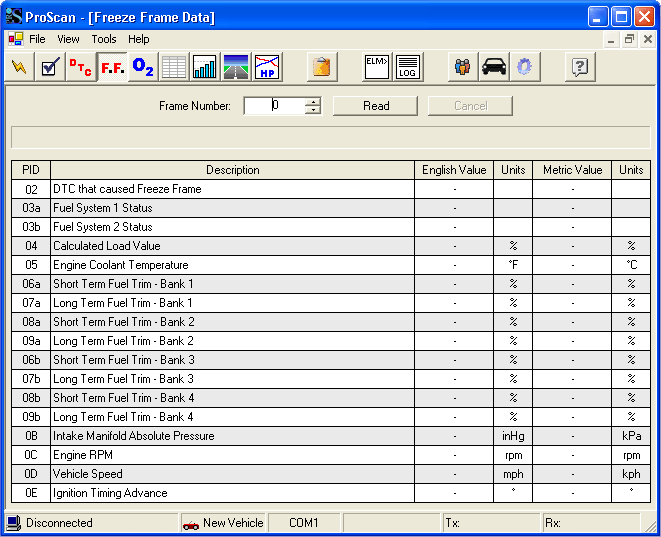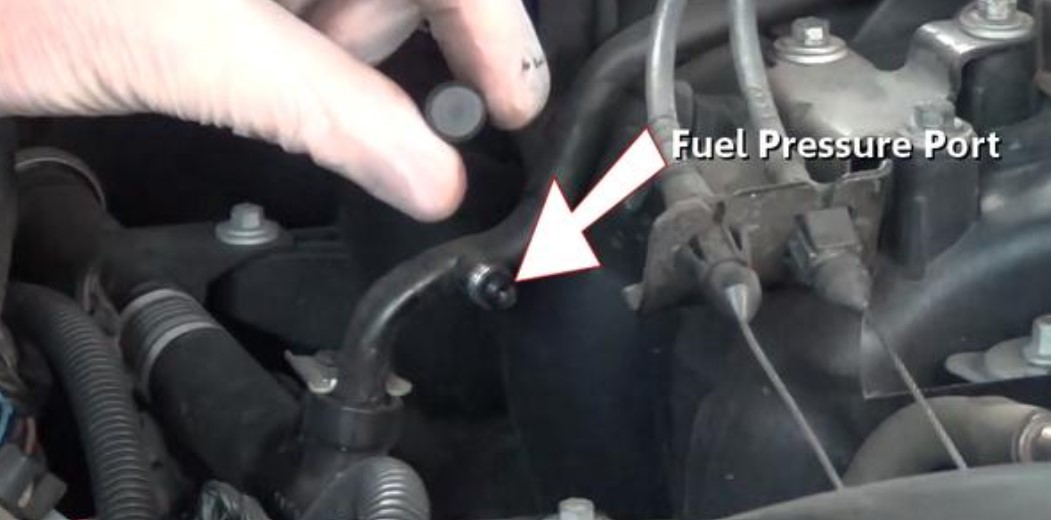

Using Freeze Frame data as a diagnostic tool - Diagnostic Digest Volume 5
In the west Texas town of Midland, football is the town’s number one activity. Ranking a close second is oil exploration. The refineries turn crude oil into cheap gasoline and Diesel fuel that moves the Midland population. This is not Austin: a Google Maps view of the Tesla Supercharger on Antelope Trail shows one lone Model Y taking on electrons next door to the Love’s Travel Stop.
Nestled in Midland’s middle is Gearbox Garage. Just 6 years old, it has gained a loyal following from the townfolk. Terry Jackson runs the 2-bay operation with a 3-acre gravel lot that is full of pickup trucks and an occasional SUV. But don’t let the gravel lot and the metal building fool you; Terry is all about having the latest tools and the knowledge to use them effectively.
The wide-open spaces and the ruler-straight sections of TX-158 W provide plentiful opportunities for a driver to “open her up and see what she’ll do.” Sometimes that leads to encounters with the Texas Highway Patrol Troopers. And sometimes it leads to a visit with Terry at the Gearbox Garage.
Freeze Frame (FF) data is typically recorded along with the first code that is set. However, a code of higher priority that occurs later can cause the first set of FF data to be overwritten.
A local resident had recently allowed his newly licensed 16-year-old son to drive his 2002 Ford F-150 with 2WD and a 4.6L V8. Upon his son’s return from a Friday night high school football game the dad noticed the check engine light was on.
Gearbox Garage had never worked on this F-150 before and its owner didn’t remember what services had been performed in the last few years. The Ford had over 196,000 miles on it and looked surprisingly good for its age and miles.
Terry took a test drive lap around town, past the Permian Basin Petroleum Museum. The Ford drove well enough – a bit weak, but overall a smooth ride. It didn’t seem too different from the hundred other F-150s he had driven. However, the pesky CEL glowed yellow and demanded his attention.
A scan tool was connected to the Ford. The PCM had three codes stored:
- P0171: Lean Condition Detected Bank 1
- P0174: Lean Condition Detected Bank 2
- P0300: Random Misfire
While running the engine, Terry grabbed his scan tool and explored some live data. Fuel trim was normal and the current misfire counts were low. The Mass Air Flow (MAF) sensor reading at idle indicated 4.7 grams/second; at twice idle speed it read 9.7 grams/second. Nothing noteworthy there and the readings ruled out any major vacuum leaks or an out-of-range MAF sensor.
Perhaps there was some Freeze Frame data (FF) that would shed some light on the reason for the illuminated CEL. The FF info would reveal what conditions were present during the code-setting event – information that could prove useful to Terry.
FF data is typically recorded along with the first code that is set. However, a code of higher priority that occurs later can cause the first set of FF data to be overwritten. Examples of higher priority codes include those that relate to catalyst damaging conditions or even problems that could damage the engine. Terry has seen some newer vehicles record multiple sets of FF data or FF movies.
On his scan tool, the Generic OBD-II mode needed to be activated for the FF information to be revealed.
The FF data was related to the P0300 code, and the data told an interesting story:
- Fuel System Status: Open Loop (OL). The fuel management system was in open loop operation at the time the code was set. This often happens at wide-open throttle.
- Engine Coolant Temperature: 204° F. While not overheating, this engine was working hard.
- Short Term Fuel Trim Bank 1 and Bank 2 were both over +7%
- Long Term Fuel Trim Bank 1 and Bank 2 were both over +25%. The computer was trying to add fuel to correct a lean condition.
- Engine RPM was 5110.
- The Vehicle Speed Sensor (VSS) measured 115 MPH while the P0300 was recorded.
When the Freeze Frame data was correlated with the age of the driver, the evidence pointed to male-pattern street racing.
It was time to call the owner of the truck and tell him what Terry had found. The dad mumbled something about “grounding that boy for a year,” and said he would get back to Terry about further diagnosis.
Later that night, in some heated conversation with his son, beans were spilled and the son’s efforts to extract maximum performance from the old Ford truck were confirmed.
But why the lean condition and misfire codes?
Driving the truck as hard as the kid did would tax the fuel system’s ability to deliver the right amount of fuel. Perhaps the truck had low fuel pressure due to a weak fuel pump or a restriction in a line or filter?
Acting on a hunch, Terry did a visual inspection on the fuel filter. It was easily found on the driver’s side of the truck, attached to the frame. It appeared original.
Before changing the filter, Terry thought it wise to measure fuel pressure at the conveniently mounted test port located on the fuel injection rail.
The fuel pressure specification with the engine running at idle was 193-310 kPa (28-50 psi). The aged Ford’s fuel system measured 172 kPa (25 psi) at idle and slightly less at wide open throttle under load.
First order of business was fuel filter replacement; the fuel pump would be next if the pressure remained low.
After Terry replaced the fuel filter the pressure at idle was a much improved 276 kPa (40 psi) and it remained near that value under load.
Now, due to liability insurance and Terry’s own common sense, he couldn’t test the truck in the 100+mph conditions that caused the issue in the first place. However, a more serene test drive convinced both Terry and the owner that the truck had more power than before. They both deemed this repair a “win.”
As for the newly minted sixteen-year-old wannabe racer, he is now driving a 1999 Toyota RAV4. 0 to 60 mph in 11 seconds (0 to 100 wasn’t happening).
Editors Note: Diagnostic Digest uses real life diagnostic scenarios with appropriately ficticious characters and locations to illustrate real world diagnostic techniques.
Want to see how ALLDATA can improve shop efficiency? Check out our suite of products, each designed to contribute to both shop efficiency and productivity.
If you would like to read more articles like this one please subscribe to ALLDATA News.










